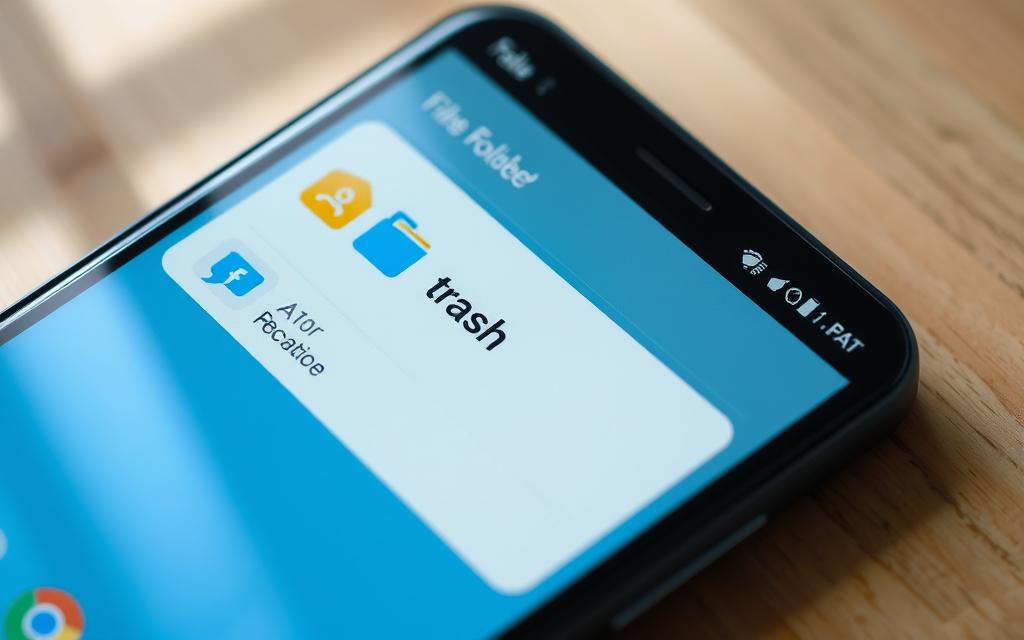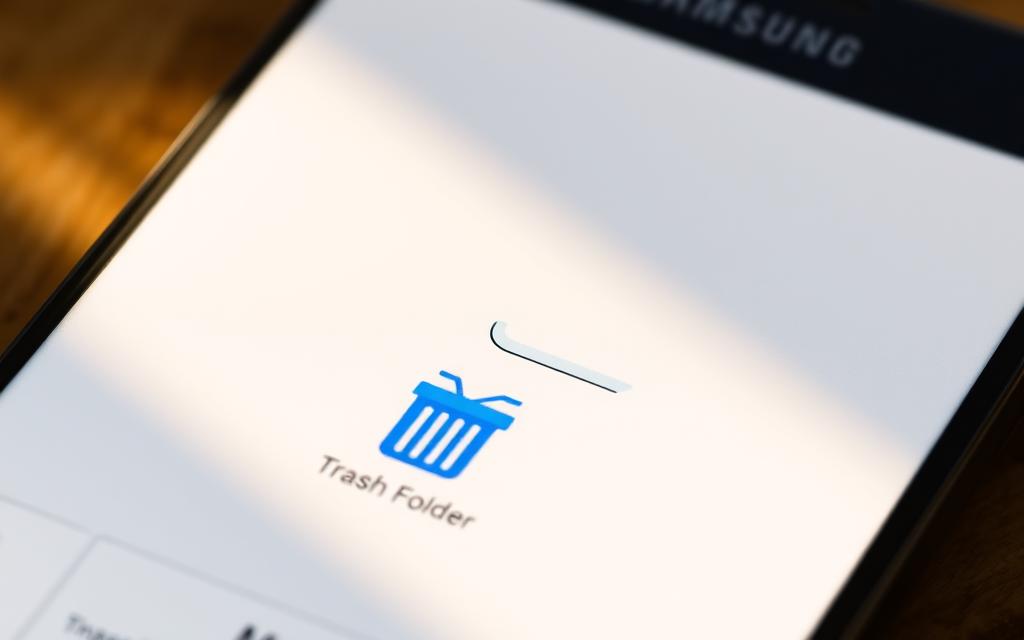Table of Contents
Managing files on Android devices differs significantly from desktop systems. Unlike computers, these devices lack a universal recycle bin for deleted items. Instead, file management is handled by specific apps like Files by Google, Samsung My Files, Google Photos, and Samsung Gallery.
Permanent deletion of files offers notable advantages. It optimizes storage space and enhances security by ensuring sensitive data is completely removed. This process varies slightly depending on the device and its interface, whether stock Android or Samsung’s custom system.
For example, Samsung Gallery retains deleted files for 30 days before permanent removal. Understanding these differences helps users manage their storage effectively. This guide is relevant for all major Android manufacturers, ensuring clarity for everyone.
Why Clearing the Recycle Bin is Important
Efficient file management plays a critical role in maintaining your phone’s functionality. When files are deleted, they often move to a trash folder, where they remain temporarily. Over time, these deleted files can consume valuable storage, slowing down your device and reducing available space.
Clearing the recycle bin ensures that unnecessary files are permanently removed. This process not only frees up storage but also enhances security. Sensitive documents or personal media stored in the trash folder can still be recovered, posing a risk to your privacy.
For instance, Samsung Gallery retains deleted items for 30 days before permanent removal. Regularly emptying the trash folder prevents accidental recovery and ensures compliance with data privacy regulations. It also reduces clutter in both local and cloud-based storage interfaces, improving overall device performance.
| Benefit | Description |
|---|---|
| Storage Optimization | Reclaims valuable space on internal memory and SD cards. |
| Security Enhancement | Prevents recovery of sensitive documents or personal media. |
| Organizational Efficiency | Maintains a clean and organized file management system. |
| Device Performance | Frees up RAM and storage, improving overall functionality. |
By regularly clearing the recycle bin, you ensure your device runs smoothly, stays secure, and remains clutter-free. This simple practice is essential for maintaining both performance and privacy.
How to Clear the Recycle Bin in Android Using Files by Google
Files by Google simplifies file management on Android devices. This app provides a dedicated trash folder for deleted items, ensuring a streamlined process for handling unnecessary files. Whether you’re using a stock Android or Pixel device, the Files app is a reliable tool for optimizing storage.

Step 1: Open the Files by Google App
Locate the Files app in your device’s app drawer. Tap to open it, and you’ll see a clean interface designed for easy navigation. The app’s hamburger menu provides access to various sections, including the trash folder.
Step 2: Access the Trash Folder
Navigate to the hamburger menu and select the trash folder. Here, you’ll find all deleted items temporarily stored. You can choose individual files or select the All Items option for bulk deletion.
Step 3: Delete Files Permanently
Once you’ve selected the files, tap Delete to initiate the process. The app implements a two-step confirmation to prevent accidental deletions.
“Permanent deletion is irreversible, so ensure you’ve selected the correct files.”
Additionally, theFiles appincludes a file protection feature to safeguard important items from being deleted.
By using the Files app, you can efficiently manage your device’s storage and maintain a clutter-free environment. Regularly emptying the trash folder ensures optimal performance and security.
Clearing the Trash in Samsung My Files
Samsung My Files offers a streamlined way to manage deleted items on Galaxy devices. As the default file manager, this app provides a unified system for handling trash files. With the One UI 6.0 update, Samsung introduced a cohesive approach to trash management across My Files, Gallery, and Voice Recordings.
Deleted items are stored in the trash folder for 30 days before permanent removal. This retention policy allows users to recover accidentally deleted files while ensuring storage optimization. Unlike stock Android, Samsung’s implementation integrates multiple apps into a single trash management system.
Step 1: Launch the My Files App
Open the My Files app from your Galaxy device’s app drawer. The interface is designed for easy navigation, with clear options for managing files and folders.
Step 2: Navigate to the Trash Folder
Access the trash folder from the main menu. Here, you’ll find all deleted items temporarily stored. You can select individual files or use the bulk selection option for multiple items.
Step 3: Empty the Trash
To permanently delete items, tap the three-dot menu and select empty trash. This action removes all trash files from the folder, freeing up valuable storage space on your phone.
“Regularly emptying the trash ensures your device remains clutter-free and performs optimally.”
By leveraging the My Files app, Galaxy users can efficiently manage their deleted items and maintain a clean storage system. This process is essential for optimizing device performance and ensuring data security.
Removing Trash in Google Photos
Google Photos provides a seamless way to manage your media library, including deleted items. Unlike traditional file managers, it integrates cloud storage, making it essential to understand how its trash system works. Whether you’re managing device-stored or cloud-only photos, the process is straightforward but requires attention to detail.

Deleted items in Google Photos are moved to the trash section, where they remain for 60 days before permanent removal. This retention period allows users to recover accidentally deleted photos while ensuring storage optimization. However, once the trash is emptied, recovery becomes impossible.
Step 1: Open Google Photos
Launch the Google Photos app from your device’s home screen or app drawer. The interface is user-friendly, with a bottom navigation bar providing quick access to key sections like Library and Photos.
Step 2: Access the Trash Section
Navigate to the Library tab and select the trash option. Here, you’ll find all deleted items temporarily stored. You can review each file individually or use the bulk selection feature for multiple deletions.
Step 3: Empty the Trash
To permanently delete items, tap the empty trash option. The app implements a two-step confirmation to prevent accidental deletions.
“Once the trash is emptied, recovery is no longer possible, so proceed with caution.”
| Feature | Description |
|---|---|
| Cloud Sync | Deleted items are synced across devices linked to your Google Account. |
| Retention Period | Items remain in the trash for 60 days before permanent removal. |
| Selective Deletion | Choose specific files or empty the entire trash folder. |
| Recovery Limitations | Once emptied, files cannot be recovered. |
By regularly managing the trash in Google Photos, you can optimize storage and maintain a clutter-free library. This practice is particularly beneficial for Google One subscribers, as it directly impacts cloud storage usage.
Emptying Trash in Samsung Gallery
Samsung Gallery offers a dedicated system for managing deleted media files. This app provides a trash folder where deleted items are stored temporarily. Understanding this feature ensures efficient storage management and data security.

Deleted files remain in the trash folder for 30 days before being permanently removed. This retention period allows users to recover accidentally deleted items. However, once the trash folder is emptied, recovery becomes impossible.
Step 1: Open the Gallery App
Locate the Samsung Gallery app on your device. Tap to open it, and you’ll see a clean interface designed for easy navigation. The hamburger menu provides access to various sections, including the trash folder.
Step 2: Access the Trash Folder
Navigate to the hamburger menu and select the trash folder. Here, you’ll find all deleted items temporarily stored. You can review individual files or use the bulk selection option for multiple deletions.
Step 3: Delete Files Permanently
To permanently remove items, tap Delete after selecting the desired files. The app implements a two-step confirmation to prevent accidental deletions.
“Once the trash is emptied, recovery is no longer possible, so proceed with caution.”
By regularly managing the trash folder in Samsung Gallery, you can optimize storage and maintain a clutter-free media library. This practice is essential for both performance and security.
Other Methods to Free Up Storage on Android
Optimizing storage on Android devices involves more than just deleting files. There are several effective techniques to reclaim space and enhance your phone’s performance. Let’s explore some of these methods.
Clearing app cache is a simple yet powerful way to free up storage. Apps like Discord accumulate temporary data over time, which can be safely removed. Navigate to your device’s settings, select the app, and tap clear cache to reclaim valuable space.

Managing app-specific storage is another effective strategy. For example, WhatsApp stores media files that can quickly consume space. Regularly review and delete unnecessary photos, videos, and documents within the app to keep your device clutter-free.
Cloud storage optimization is essential for users relying on services like Google Drive. Empty the trash folder in your account to permanently delete unwanted files. This ensures your cloud storage remains efficient and organized.
For devices with expandable storage, utilizing an SD card can significantly increase available space. Move large files, such as photos and videos, to the SD card to free up internal storage.
Removing unused apps and bloatware is another practical approach. Identify apps you no longer use and uninstall them to reclaim space. This also improves your device’s performance by reducing background processes.
Smart storage automation features can simplify this process. Enable options like automatically delete backed-up photos to keep your device optimized without manual intervention.
Advanced users can explore adb debugging to remove system apps that are otherwise uninstallable. This method requires technical knowledge but can free up significant storage.
As a last resort, a factory reset can restore your device to its original state, eliminating all unnecessary files. However, ensure you back up important data before proceeding.
“Regularly optimizing storage ensures your Android device remains fast, secure, and clutter-free.”
By implementing these methods, you can effectively manage your storage and maintain your device’s performance. Each technique offers unique benefits, making it easier to keep your phone running smoothly.
Conclusion
Managing deleted files across Android devices requires understanding platform-specific approaches. Whether using Google Photos, Samsung Gallery, or the Files app, each system offers unique trash management features. Regularly emptying the trash ensures optimal storage and enhances device performance.
Permanent deletion is irreversible, so always double-check before emptying the trash. Complement this habit with other storage optimization techniques, such as clearing app caches or moving files to cloud services. These practices keep your phone running smoothly and secure sensitive data.
For users managing multiple devices, ecosystem-wide trash management through Google Account or Samsung Cloud ensures consistency. Stay updated on upcoming Android features to further streamline file management. Proper disposal of unnecessary files not only frees up space but also safeguards your privacy.
By adopting these habits, you can maintain a clutter-free and efficient Android experience. For more detailed steps, explore this guide.
FAQ
Why is it important to empty the trash on Android devices?
Emptying the trash helps free up storage space on your device, ensuring smoother performance and preventing clutter from deleted files.
Can I recover files after emptying the trash in Google Photos?
No, once you empty the trash in Google Photos, the files are permanently deleted and cannot be recovered.
How do I permanently delete files using the Files by Google app?
Open the Files by Google app, navigate to the trash folder, select the files, and tap the delete option to remove them permanently.
Does Samsung My Files have a trash folder?
Yes, Samsung My Files includes a trash folder where deleted items are stored temporarily before being permanently removed.
How do I empty the trash in Samsung Gallery?
Open the Gallery app, access the trash folder, and select the option to delete all items permanently.
Are deleted files stored in the trash folder indefinitely?
No, deleted files are typically stored in the trash folder for a limited time, usually 30 days, before being automatically removed.
Can I delete specific files from the trash folder?
Yes, you can select and delete specific files from the trash folder in apps like Files by Google, Samsung My Files, and Google Photos.
What happens if I don’t empty the trash on my Android device?
If you don’t empty the trash, deleted files will continue to occupy storage space, potentially slowing down your device.
Is there a way to recover storage without emptying the trash?
Yes, you can manually delete unnecessary files, uninstall unused apps, or move data to cloud storage to free up space.









